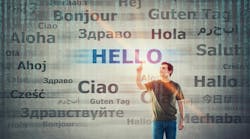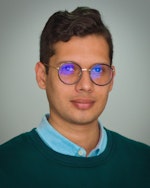The language service industry has experienced an impressive surge within the ever-evolving health-care landscape, especially in an increasingly interconnected world. The need for multilingual communication within the medical community extends to peers, related disciplines, and patients from diverse linguistic backgrounds—and dentistry is no exception.
Although the multilingual communication requirements within dentistry are not too different from those of other medical specialties, dentalese has industry-specific terminology, acronyms, and language conventions that set it apart. This situation calls for a specialized approach from language professionals who have both linguistic expertise and a deep understanding of dental principles.
Related reading:
- The talent life cycle: Attract and retain a diverse workforce
- New data: Americans are still not getting the dental care they need
Language services include a broad spectrum of professionals, from translators and interpreters to language consultants and localization specialists. Translation refers to the written transfer of text from one language to another. In contrast, interpretation deals with spoken language in real-time or consecutively.
Following is a look into the world of medical translation, focusing on its critical role in ensuring effective communication and offering pragmatic advice on its practical use within the dental industry.
Fostering effective communication
In health care, translation is necessary for both scientific discourse and patient-facing resources. However, the translation of patient-facing materials requires a different approach than that of complex scientific articles. Since effective communication involves not only transmitting information but also ensuring full comprehension, adapting the message to improve patient understanding is vital.1
For instance, the informed consent form is a common document in daily practice, but many patients find it difficult to understand—this is where medical translators step in.2 Their expertise in distinguishing between general and specialized texts and tailoring their translation accordingly helps facilitate understanding and collaboration between doctors and patients.3
While bilingual staff could be helpful in limited scenarios, investing in interpreter-mediated dental care also proves invaluable, aligning with recent trends toward personalized care and patient empowerment.4
Given the different communicative scenarios in health care, medical translation becomes a multidisciplinary task requiring specialized knowledge. Collaborating with experts in medical translation ensures optimal communication with non-English-speaking patients, positively impacting their oral health outcomes.
Expanding the dental equipment industry
Dental devices represent a significant sector within the broader medical devices market. And that sector keeps growing internationally, especially in Europe and Asia, which is no surprise in a field heavily reliant on technology such as dentistry.
In today’s corporate world, dental leaders span international borders. The globalization of these brands means more content to be translated into multiple languages to maintain a digital presence and that leaders need to communicate with customers in several languages. A remarkable cross-linguistic communication strategy helps maintain their image, protect their reputation, and show respect for local cultures.
Moreover, translating patents, manuals, and regulatory documentation requires translators to be well versed in medical-dental terminology and technical-scientific writing. Given the intricacies of the regulatory landscape and the technicality of product documentation, a poor translation may cause setbacks in product approval, licensing, and marketing. It can also put off potential customers and set a bad precedent for your brand.
Promoting diversity in dental research
Research has driven progress in every dental science field, including endodontics, periodontics, oral and maxillofacial surgery, oral radiology and imaging, dental materials, and more. However, as the lingua franca of science, English poses difficulties to non-English-speaking researchers, potentially limiting their contributions to science.
A recent study showed that non-native English speakers spend more time reading, writing, and preparing English papers. Despite their efforts, they often experience higher rejection rates.5 Additionally, another study showed that the lack of translated informed consent forms also affects the inclusion of subjects with limited English proficiency in clinical research.6
Although there is already a conversation about the detrimental effects of language barriers in science, there is not enough discussion about using language professionals to overcome these obstacles. Linguists emerge as indispensable allies for scientists, helping increase research diversity and facilitate scientific communication.
Enabling international collaboration
Language barriers may also prevent professionals from giving lectures in English-dominated international conferences. Interpreting services could immensely benefit these colleagues, and would prevent a lack of language proficiency from being a reason to shy away from these spaces.
Translating conference materials and communications may also encourage the attendance of colleagues with different linguistic backgrounds at these events. Dental translators may facilitate collaboration among professionals of different nationalities, which can be a particularly chaotic task in dentistry due to the multiple dental notation systems used in other nations.
This lack of universal criteria may be more problematic in fields such as forensic dentistry, as highlighted by the 2004 Thailand tsunami incident—with so many ways to name and describe dental structures and treatments everywhere, international efforts for victim identification became incredibly challenging.7 This issue is exacerbated when the people involved are unfamiliar with dental terminology, concepts, and nomenclatures.
Medical translators with expertise in dental science play a pivotal role in bridging these gaps, assisting in the exchange of information among dental experts worldwide.
Empowering book authors and publishers
The perks of having your book translated are multifaceted and may help shape dentistry’s future. As an author or a publishing house within the dental field, you hold the power to disseminate valuable insights to a global audience.
Your work’s influence is significantly enhanced when it transcends languages. However, effective translation goes beyond mere language conversion—it adapts your message to consider cultural nuances and connect with the target reader. This adaptation ensures your book remains culturally relevant, uplifting your image and impact across cultures.
Translating your book opens doors to a worldwide readership, allowing your knowledge to reach diverse communities of professionals, students, and enthusiasts. A translated book can also elevate your standing in the international dental community, and translated textbooks help enrich educational resources in institutions where English is not the primary language of instruction.
Best practices for language service buyers
Define objectives: Clear objectives guide the entire process and allow language professionals to tailor their services. Start by defining your purpose with the translation of your product/service or the interpretation needs at your business/practice. Are you aiming to expand your patient base, market dental products internationally, or collaborate on cross-border research? What languages and dialects will you cover? Who is your target audience? What is the purpose of your communication? A professional linguist will ask these questions and more, but it’s better to start with some goals in mind.
Work with qualified professionals: Choose accredited and experienced language professionals specializing in medicine and dentistry. To do so, you may assess the translator’s medical/dental experience or request a translation portfolio if available. If you decide to partner with a translation agency, ask if it’s possible to see anonymized résumés of the linguists involved in your project to ensure they’re qualified. It’s also advisable to check if they are a member of any professional association since that could speak to their competence and commitment. Finally, you want your translator to be a native speaker of, or to have formal education in, the target language. This way, you can ensure they have the cultural proficiency to communicate successfully with your readers.
Engage and collaborate: Involve language professionals and cooperate with them from the beginning. Work together to create and maintain glossaries and style guides for your current and future projects. This practice promotes a consistent tone and aligns your communication across different languages. Additionally, be ready to assist and clear any doubts. Although they may not always do so, a good translator asks questions when clarification is needed to deliver the best possible result. Keep in mind that there are no stupid questions when it comes to the precision and integrity of your message.
Know your local regulations: Regulations may vary significantly from one place to another. Complying with them improves patient safety and trust in your business. Find out what certifications/licenses must be held by medical interpreters in your area. Not all translations need to be certified—particularly for websites, appointment reminders, postcare instructions, and the like—but businesses expanding into new markets must comply with the respective country’s laws regarding translation requirements for dental device labeling, package inserts, and regulatory documentation.
Be cautious with AI and MT: Some authors have praised artificial intelligence (AI) and machine translation (MT) for its potential in overcoming language barriers in health care. While the adoption of AI in dentistry is enthusiastic and possibly surpasses that of other medical fields, we must not forget that it is a tool and not a replacement for human expertise. Use automatic translation tools for personal purposes only. Although MT has great potential for certain uses, it can also be disastrous when done empirically. If your language service provider uses MT, inquire about their translation practices, how they’re processing your data, and what measures they take to keep it confidential. However, the best advice is to prioritize human translation as much as possible, especially if you expect the result to be a natural translation that resonates authentically with native speakers.
Editor's note: This article appeared in the January 2024 print edition of Dental Economics magazine. Dentists in North America are eligible for a complimentary print subscription. Sign up here.
References
- Cobos López I. Traducir para el paciente: acercamiento y adaptación como modalidad de traducción. Quaderns de Filologia - Estudis Lingüístics. 2019;24(24):211. doi:10.7203/qf.24.16307
- Pérez Estevan E. La traducción y comunicación del consentimiento informado como medida para garantizar su comprensibilidad. MonTi: Monografías de Traducción e Interpretación. 2018;(10):75-91. doi:10.6035/monti.2018.10.3
- Correa Barceló C. El género información para pacientes: un análisis contrastivo del texto original en inglés y su traducción en español. Comillas Universidad Pontificia. 2020. Accessed September 22, 2023. https://repositorio.comillas.edu/xmlui/handle/11531/41659
- Bridges S, Drew P, Zayts O, et al. Interpreter-mediated dentistry. Soc Sci Med. 2015;132:197-207. doi:10.1016/j.socscimed.2015.03.018
- Amano T, Ramírez-Castañeda V, Berdejo-Espinola V, et al. The manifold costs of being a non-native English speaker in science. PLoS Biol. 2023;21(7):e3002184. doi:10.1371/journal.pbio.3002184
- Velez MA, Glenn BA, De M, et al. Consent document translation expense hinders inclusive clinical trial enrolment. Nature. 2023;620(7975):855-862. doi:10.1038/s41586-023-06382-0
- Fonseca GM, Salgado Alarcon G, Cantín M. Lenguaje odontológico forense e identificación: obstáculos por falta de estándares. Revista Española de Medicina Legal. 2011;37(4):162-168. doi:10.1016/s0377-4732(11)70083-9
Mario Muchacho, DDS, is a graduate of Universidad de Carabobo in Valencia, Venezuela, and a professional translator dedicated to improving communication in health care. With a background as a dentist and medical translator, Dr. Muchacho brings a unique perspective on the communication needs of dental patients and practitioners. Contact him at [email protected] or via dentalanguage.com.







